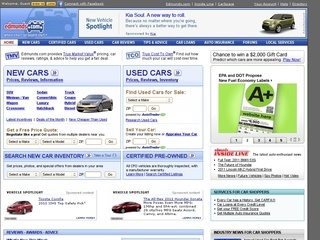
The November average payment of $500-plus for a used vehicle, Drury said, is about the average that was needed five years ago for a brand-new vehicle. Monthly payments for the average used vehicle, he noted, were $413 two years ago, $382 five years ago and $365 a decade ago. The average new vehicle, says, is edging toward $46,000. And rental car companies and other fleet buyers, unable to acquire new vehicles, stopped off-loading older ones, thereby compounding the shortage of used vehicles.īleak as the market is for used-car buyers, the computer chip shortage has also driven new-vehicle prices higher. But chip makers couldn’t respond fast enough.
#Edmunds car pricing full#
When a swifter-than-expected economic rebound boosted demand for vehicles, auto plants tried to restore full production. At the same time, demand for laptops and monitors from people stuck at home led semiconductor makers to shift production from autos, which depend on such chips, to consumer electronics. As sales of new vehicles sank, fewer people traded in used cars and trucks. Auto plants suspended production to try to slow the virus’ spread. The blame can be traced directly to the pandemic’s eruption in March of last year. And while the rate of increase is slowing, most experts say the inflated vehicle prices aren’t likely to ease for the foreseeable future.

When the government reported that consumer inflation rocketed 6.8% in the 12 months that ended in November – the sharpest jump in nearly 40 years – the biggest factor, apart from energy, was used vehicles.

“It’s quite frustrating for so many people right now.” “I’ve never seen anything remotely close to this – it’s craziness,” said Schrier, who has been selling autos for 35 years.


 0 kommentar(er)
0 kommentar(er)
